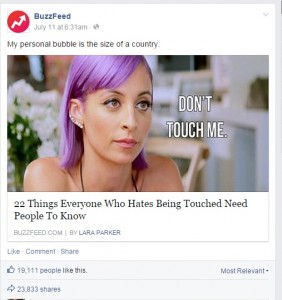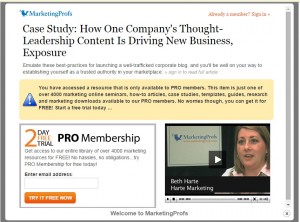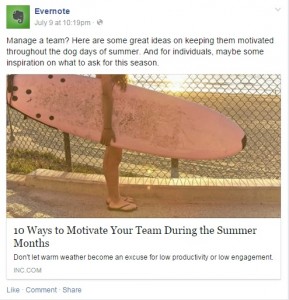Despite the fact that many businesses have an active social media presence and have managed to amass a decent following, most struggle with conversions. If you do too, it is probably time to adopt a conversion-driven strategy. Depending on what kind of conversion you are hoping to achieve, creating a conversion funnel can help optimize your social media marketing efforts.
You probably already have a conversion funnel detailing every step of the assumed path your customers take on the way to a conversion. But what you don’t realize is that your funnel has some holes. Several potential customers lose interest in your offering before they reach your ‘Buy’ or ‘Subscribe’ button. This could be for a number of reasons. Maybe your product service page is confusing and unattractive, or perhaps no one is answering your toll-free number.
Identifying the reasons for low conversions and optimizing lead generation by even one percent can help improve your conversion rate significantly. One of the major stumbling blocks for businesses in the context of social media marketing is the lack of good content; content that gets people to notice you; that gets them to say ‘I want this’.
Here are a few tips that can help you create powerful content for social media:
1. Create content that is specific to your audience: Before you can get into creating powerful content, it is vital that you first understand your audience. What are your customers’ interests and hobbies? Is there a specific problem that your product solves? Why should they choose your product over other alternatives in the market? Once you have understood the ideal customer, it becomes easier to figure out what will catch their attention.
Take this post on Buzzfeed, for example. It has managed to amass over 19k likes. And why wouldn’t it? It takes a topic that its target demographic would find interesting and adds a copy that makes them want to know more.
While creative content is important, you need to make sure that the action you’d like your audience to take is communicated clearly. Using ambiguous copy can drive away potential customers.
Action-oriented phrases that encourage customers to do a particular thing can work wonders.
According to a case study on Kissmetrics, L’Axelle, a brand selling sweat pads, wanted more of their visitors to click on the ‘Add to cart’ button. Their original copy ran ‘Feel Fresh Without Sweat Marks’, while their new, edited copy read, ‘Put an end to sweat marks’. Immediately after changing their copy to something that initiates action, the brand saw a 38.3% increase conversion rate.
2. Use gated content: Many small businesses have a misconception that gated content works only when published by big brands. This is, however, not really true and gated content is important for all businesses.
Before you gate content, you have to analyze your target demographic and the type of information you are offering. If it is information that is promotional, there’s really no point gating it as it offers no educational value to the reader. On the other hand, if the information you’re sharing is exclusive or of high value, then gating it is probably a good idea.
For example, gating a report that shares the results of a research survey you conducted makes sense. Considering the quantity of content that is shared everyday, quality is the only aspect in which you can stand out. And gated content is generally perceived to be of high quality.
Take the example of MarketingProfs. If you want to access their ‘premium’ content like this online web seminar, you have to sign up. Most people will be willing to sign up as they are assured of its quality. This ensures quality lead generation. However, proceed with caution as gating all your content may eventually cause your audience to turn away.
3. Don’t only promote: While it is normal to use social media to promote your business (sort of the whole point, actually) constantly posting promotional content is a bad idea. If you want to improve engagement and interaction with your target audience, you have to also share non-promotional content that will interest them.
TA McCann’s 5-3-2 Rule is great guideline to go by. According to this, for every ten updates that you share, five must be curated content published by an external sources that is relevant to your audience, three must be original content from your business (but not necessarily promotional), and finally two must be non-work related updates to humanize your brand and help you connect with your audience.
If you’re wondering how this can be done, take a look at EverNote’s Facebook page. It currently has 429k likes and its Twitter page has 378k followers. Instead of constantly producing promotional content, their updates include articles that their target audience will be interested in like the below article about ‘Team Management’.
Finding a constant stream of relevant and interesting content is no easy task. It demands time and manpower, which may be difficult to come by, especially in the case of small businesses. However, there are several apps that you could use to overcome this challenge.
– DrumUp is a content discovery and scheduling app that not only finds relevant content, but also schedules it for publication on multiple social media platforms, such as Facebook, Twitter and LinkedIn. It lets you edit scheduled posts and also add custom posts to the queue.
– Feedly trawls through the internet looking for content according to the keywords that you have mentioned. This ensures that you have a constant stream of relevant posts that will pique the interest of your target demographic.
– Newsle is a web app that lets you track all news that mentions you, your friends, your competitors or any experts you’d like to follow. It allows you to import your Facebook and LinkedIn contacts, making it extremely easy to follow people in your network.
Wrapping it up
According to a report on marketingland.com, social media helps drive revenue for around 54% of B2C companies and about 40% of B2B firms. With engaging, interesting content, it can increase conversions for your business as well.
Don’t forget to analyze your conversions. Like print adverts, it is difficult to try to measure the success of your post. But tools such as Google Analytics can be used to generate conversion reports. Studying these keenly will help improve your conversion funnel and ensure maximum success.


